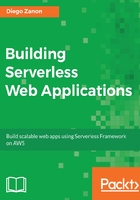
Cost efficiency
It's impossible to match the traffic usage with what you have provisioned. With IaaS or On-Premises, as a rule of thumb, CPU and RAM usage must always be lower than 90% for the machine to be considered healthy, and ideally CPU should be using less than 20% of the capacity with normal traffic. In this case, you are paying for 80% of waste when the capacity is in an idle state. Paying for computer resources that you don't use is not efficient.
Many cloud vendors advertise that you just pay for what you use, but they usually offer significant discounts when you provision for 24 hours of uptime in a long term (one year or more). It means that you pay for machines that you will keep running even in very low traffic hours. Also, even if you want to shut down machines to reduce costs, you need to keep at least a minimum infrastructure 24/7 to keep your web server and databases always online. Regarding high availability, you need extra machines to add redundancy. Again, it's a waste of resources.
Another efficiency problem is related with the databases, especially relational ones. Scaling vertically is a very troublesome task, so relational databases are always provisioned considering max peaks. It means that you pay for an expensive machine when most of the time you don't need one.
In serverless, you shouldn't worry about provisioning or idle times. You should pay exactly the CPU and RAM time that is used, measured in fractions of seconds and not hours. If it's a serverless database, you need to store data permanently, so this represents a cost even if no one is using your system. However, storage is very cheap compared to CPU time. The higher cost, which is the CPU needed to run the database engine that runs queries, will be billed only by the amount of time used without considering idle times.
Running a serverless system continuously for one hour has a much higher cost than one hour in a traditional infra. However, the difference is that serverless is designed for applications with variable usage, where you will never keep one machine at 100% for one hour straight. The cost efficiency of serverless is not perceived in websites with flat traffic.